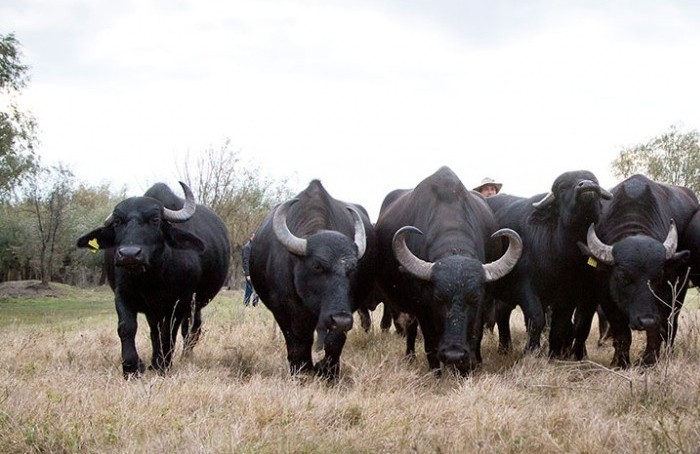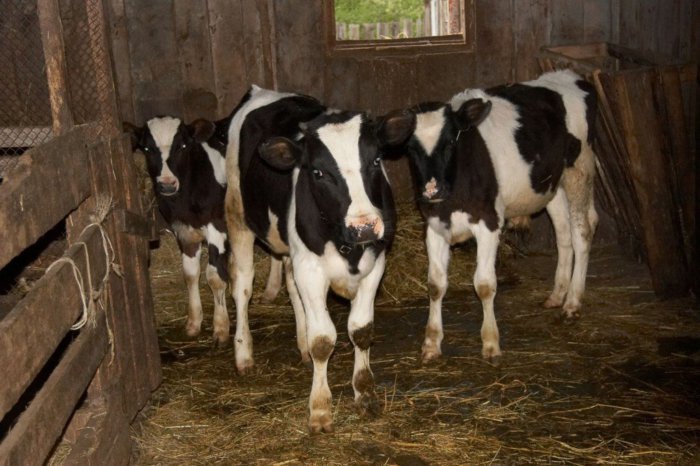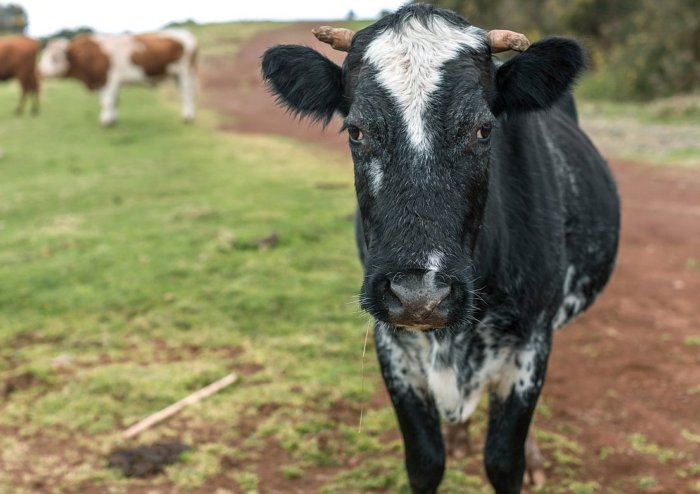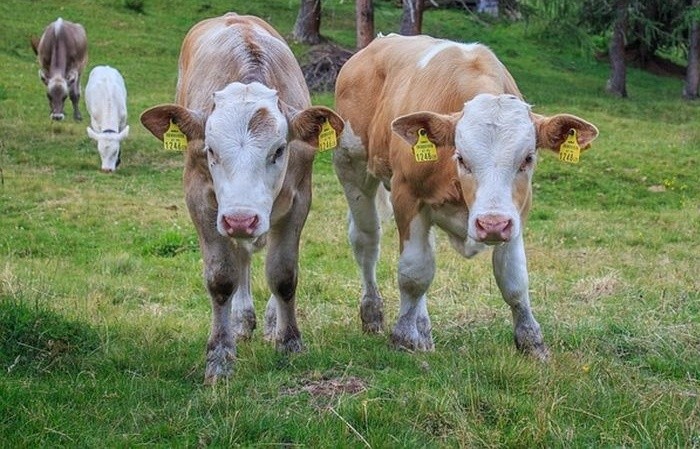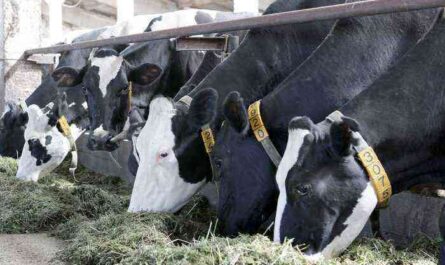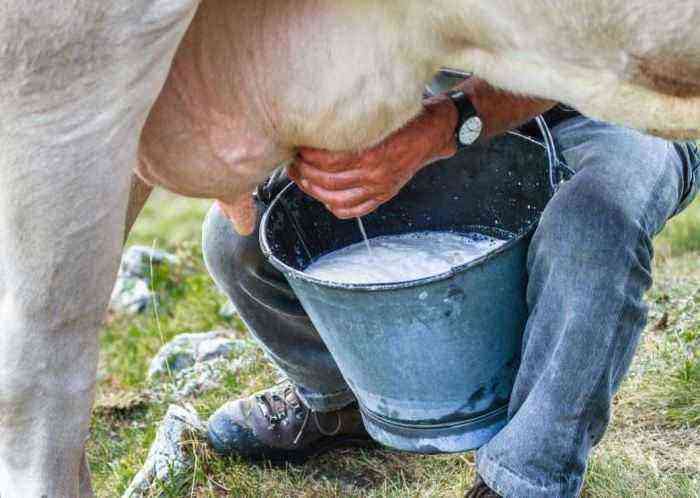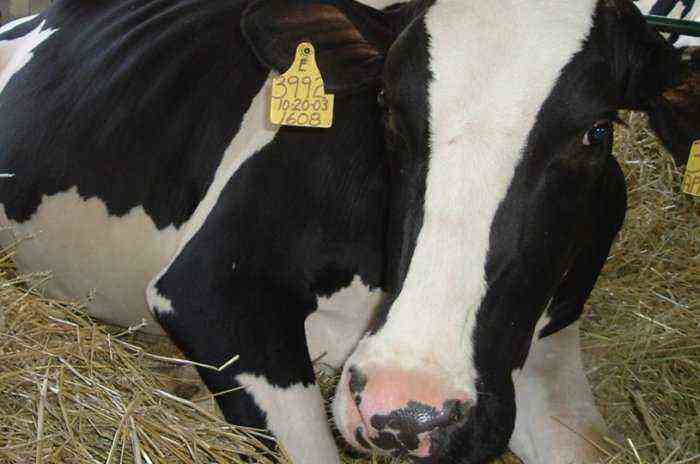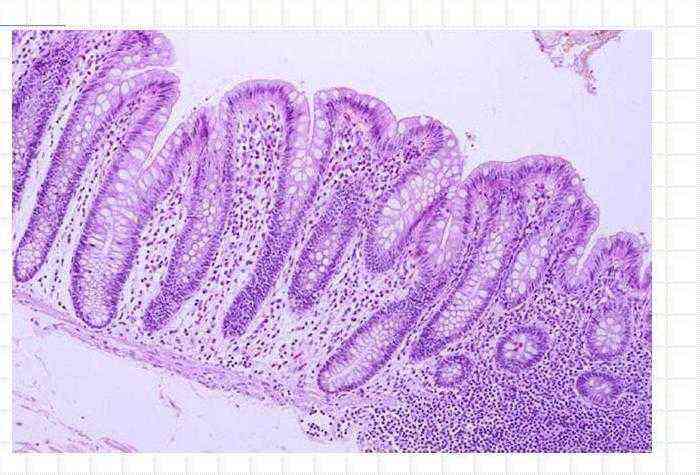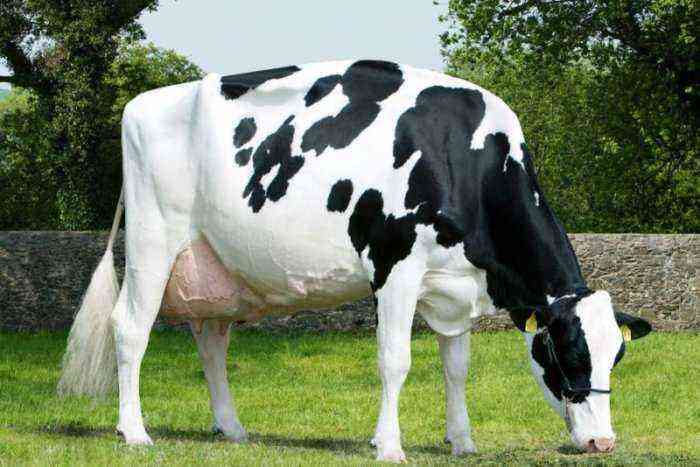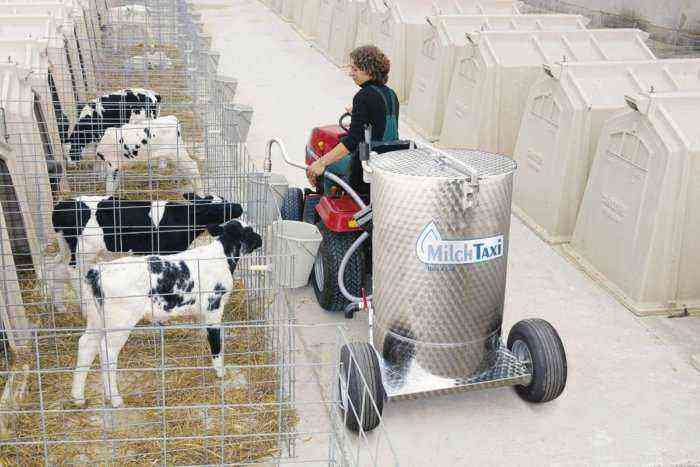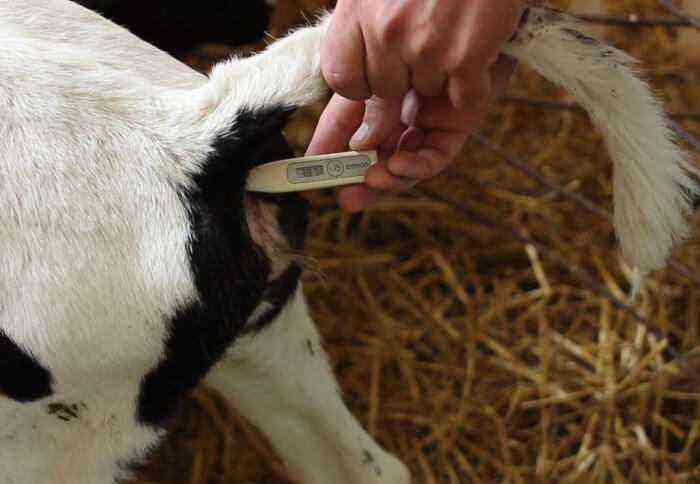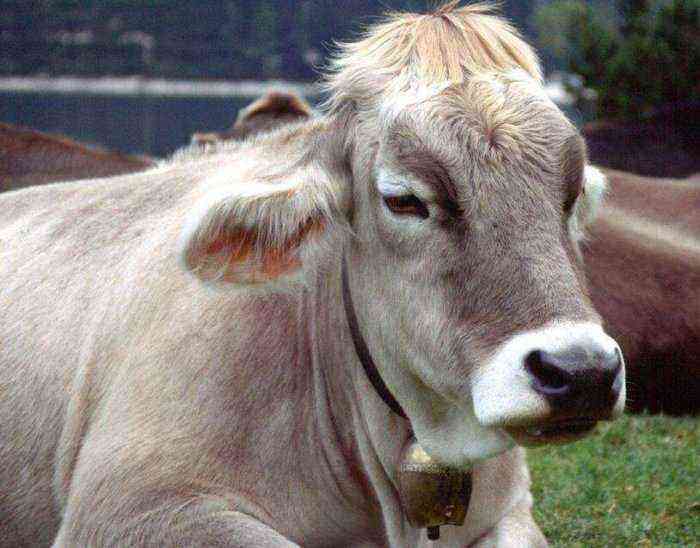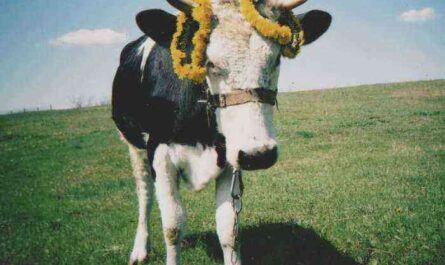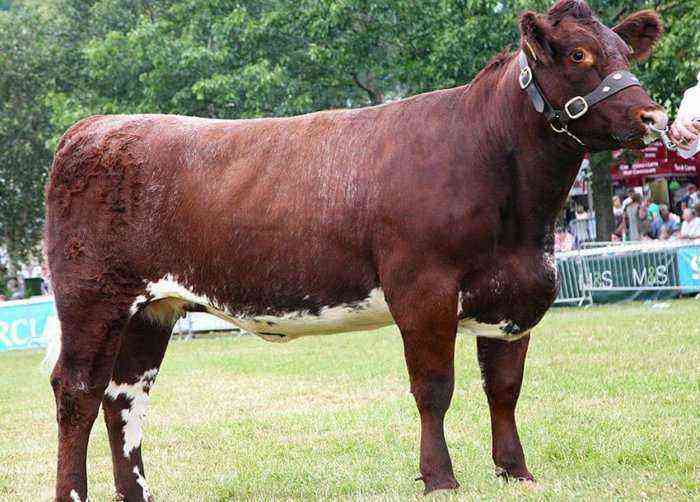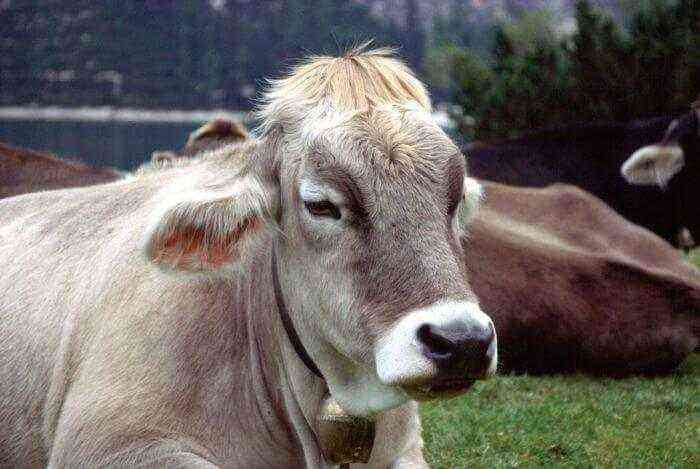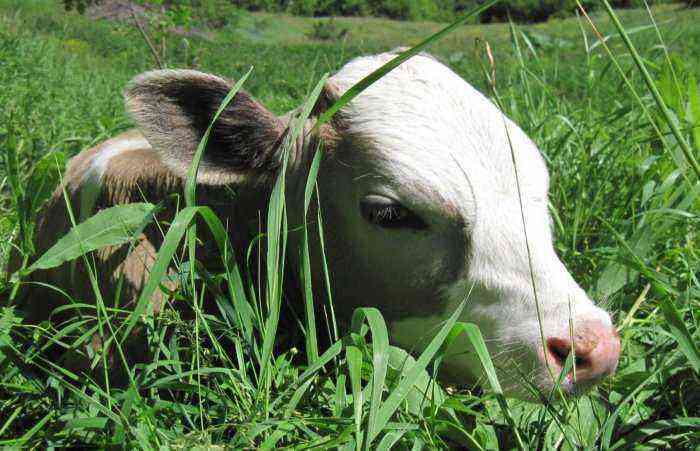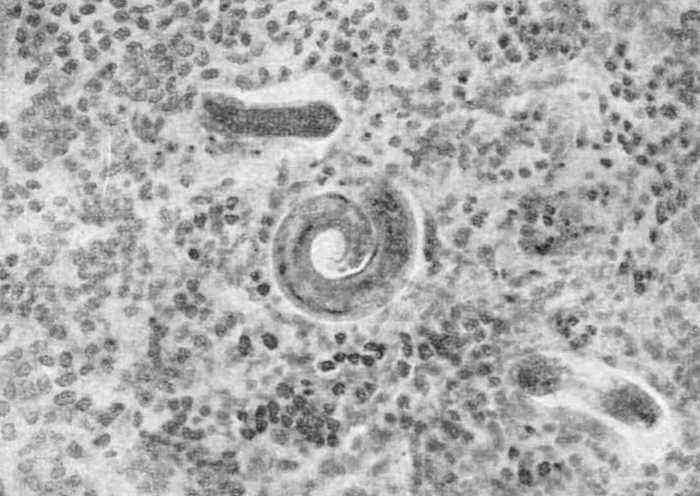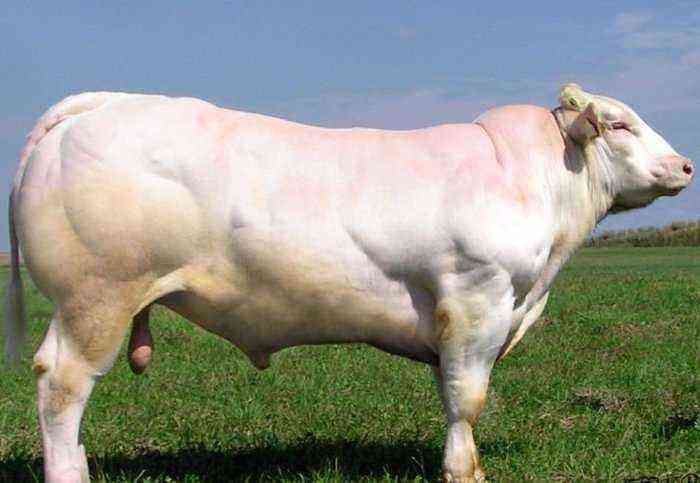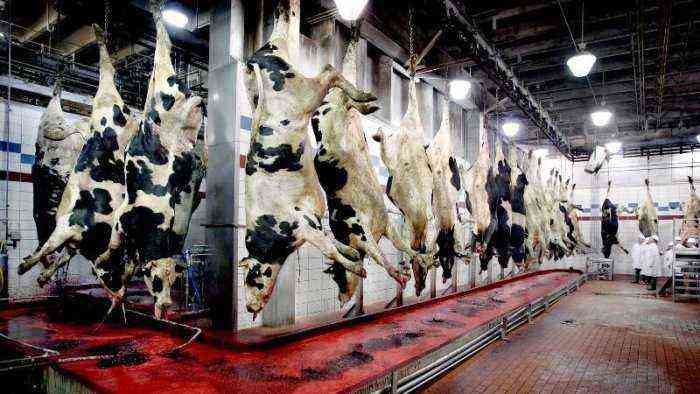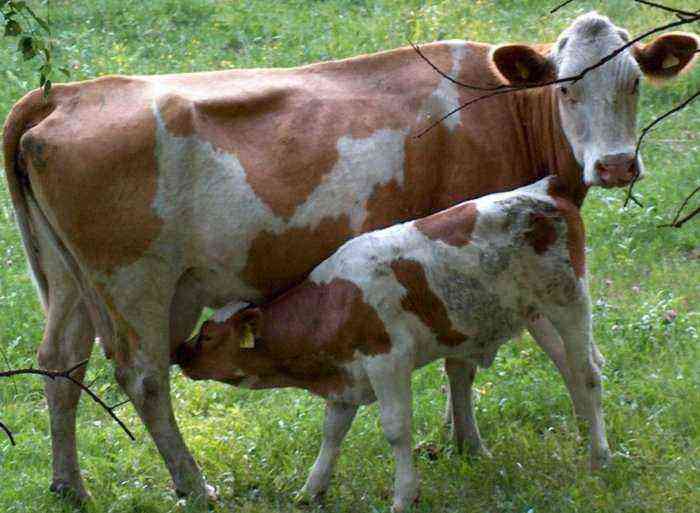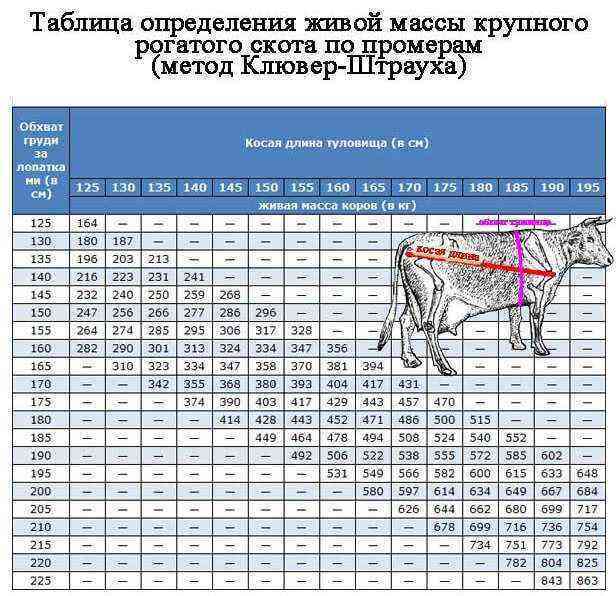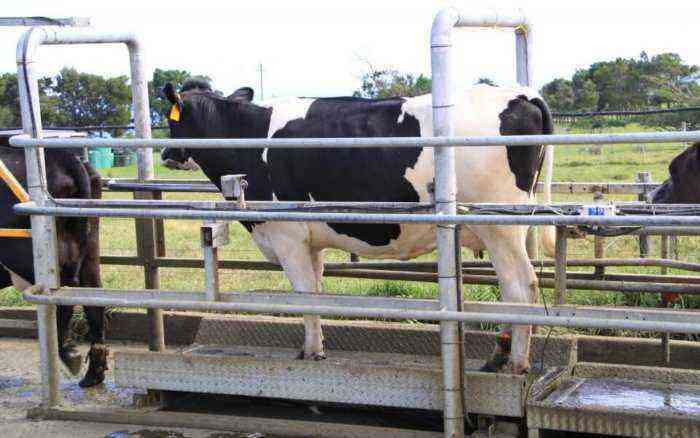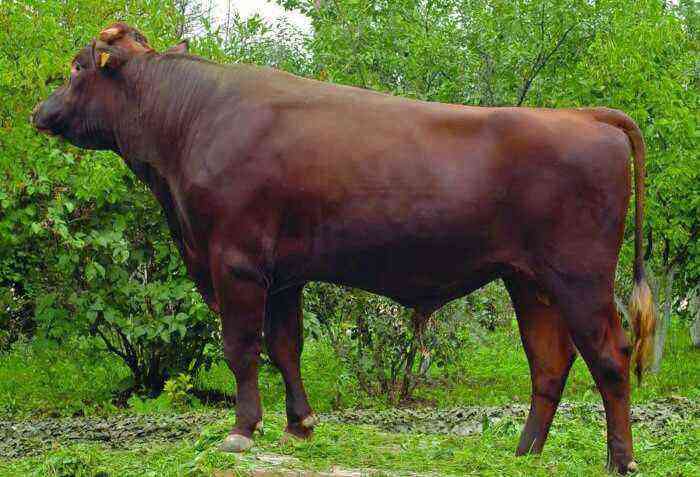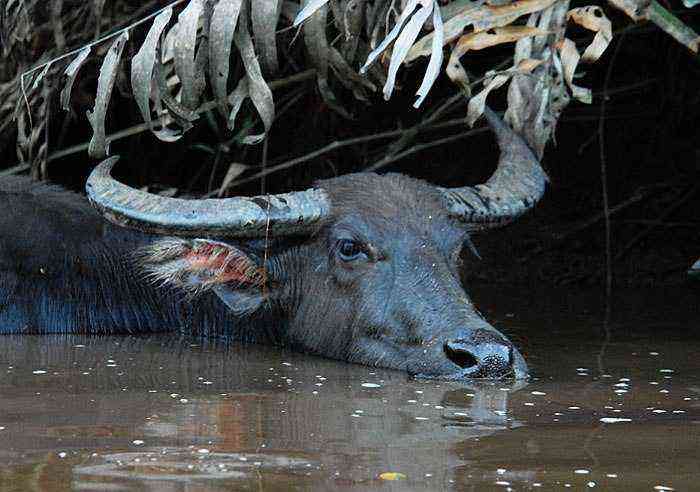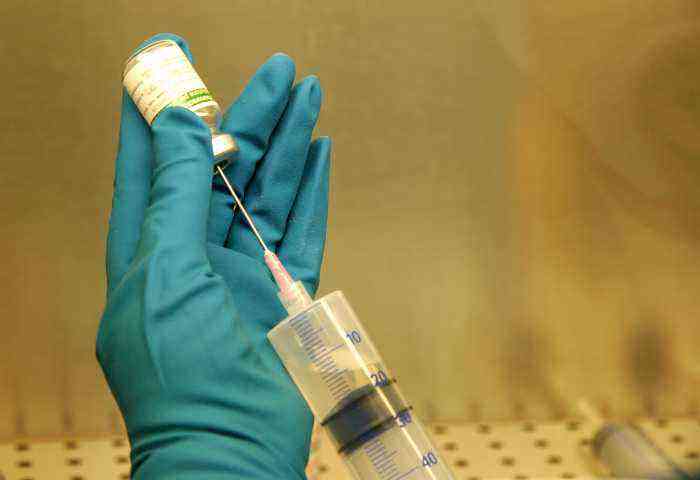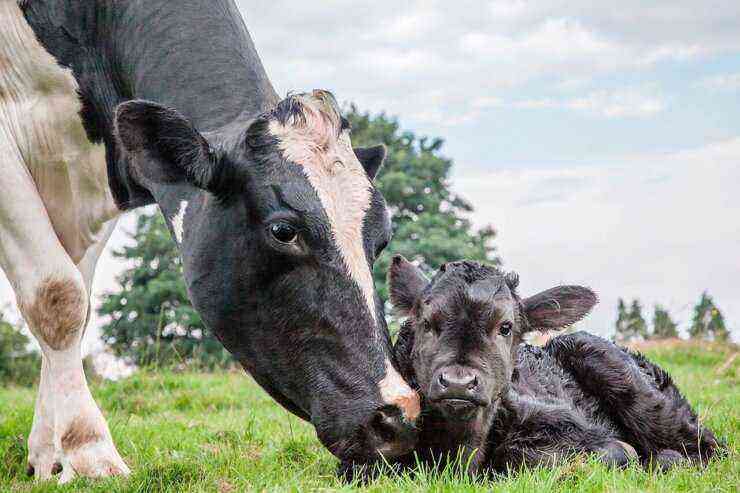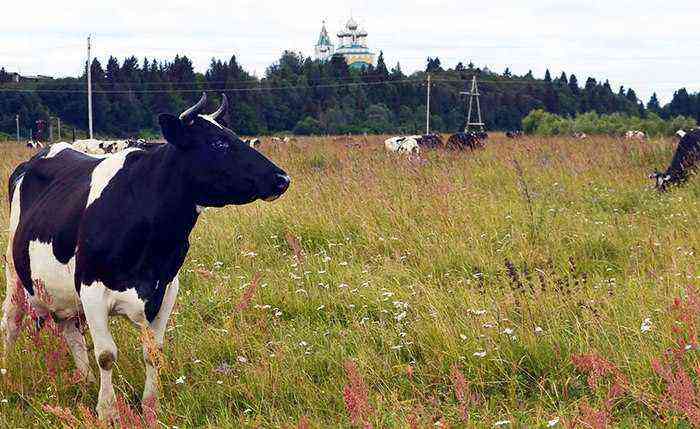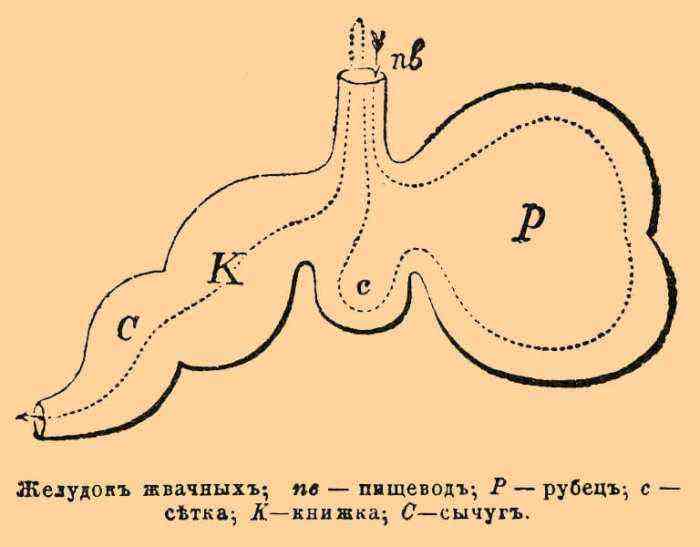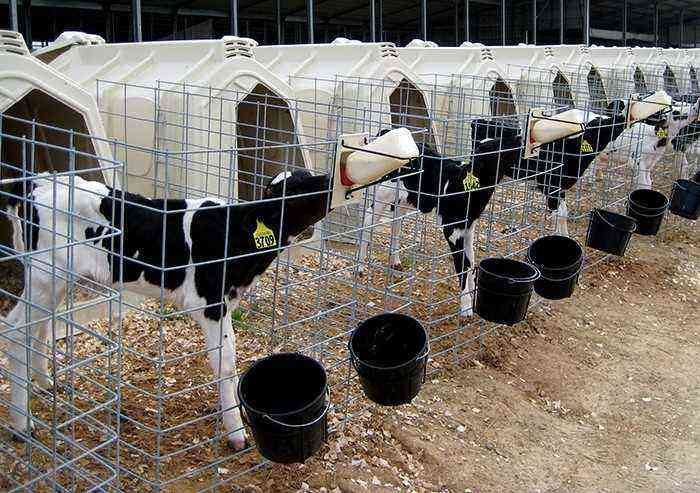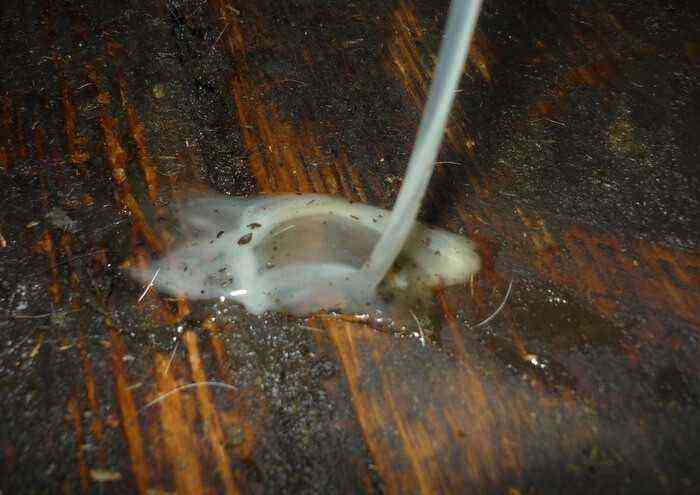There are many different diseases in cows that lead to the death of animals. Many of them are infectious in nature. And far from the last in this list is malignant catarrhal fever, which develops in cattle as a result of the vital activity of the virus in the body. Such a disease has serious consequences for the animal and requires immediate qualified intervention by a veterinarian.
Disease in cattle
History
Malignant catarrhal fever (MCF), which was also called bovine typhus at various periods of the study of the disease, is distributed almost throughout the world. This disease is an acute inflammation of the mucous membranes of the digestive tract, respiratory tract and conjunctiva of the eye. The central nervous system is also affected by the infection.
Scientists from all over the world have been studying the nature of such a disease. But the first to describe in detail the symptoms and etiology of the disease is the foreign biologist Anker. He did this in one of his works in 1832.
40 years after Anker, the domestic scientist I. Ravich took up the study of this issue. He also made a detailed description of the disease, supplementing it with some new facts. In 1881, it was established that PCG is an infectious disease. This discovery was made in the course of his research by V. Obolensky.
Much later, in 1953, microbiologist Piercy was able to accurately isolate the virus that causes disease in cattle. In 1964, the American scientist Armstrong proved that the pathogen belongs to the group of herpes viruses.
To date, large foci of PCG are rare. The last large-scale epidemic of catarrhal fever was traced in 1972 in the state of Colorado. Then more than 250 heads of cattle were infected. Of these, 37% died during the development of the disease.
Causes of appearance
MCG develops as a result of the ingestion of a DNA-containing virus, which in the scientific literature is called alcelaphine herpesvirus. This pathogen belongs to the group of herpesviruses and suggests two types. The first is distributed mainly in African countries. Cattle and wildebeest are susceptible to it. The second type is found on all other continents. It is the causative agent of catarrhal fever in cattle, as well as sheep and buffaloes.
buffaloes
When it enters a living organism, such a virus is localized in large quantities in the blood, liver, lymph nodes and brain of the animal. Outside the cow’s body, the virus is extremely unstable. At a temperature of 18-20 degrees, he lives during the day. With a decrease in this indicator to 4 degrees, the life of the pathogen increases to 12 days.
As for the ways of transmission of the virus, they have not yet been reliably studied to date. But with the spread of the disease, the following features are traced:
- It is extremely rare for cattle calves to develop MCG before the age of 1 year.
- For animals from 1 to 4 years, the largest number of cases of the disease can be traced.
- After 8 years, animals also get sick extremely rarely. If infection does occur, the cow is extremely sick and dies quickly.
- The virus can pass through the placenta of a pregnant individual and thus infect the fetus. As a result, a calf born immediately after calving can be a source of the disease.
It is worth noting that the virus that causes MCG enters the external environment exclusively with mucous secretions from the nasal cavity and eyes. In all other secrets of the body, it is absent.
Also, numerous researchers have come to the conclusion that cattle are more likely to become infected when they are kept together for a long time with a herd of sheep. This is due to the fact that sheep act as a carrier of the pathogen, while not getting sick with MCG. In some cases, the disease in small livestock can still develop.
There is another assumption about the carriers of the pathogen. It is believed that the disease is transmitted more often when domestic animals come into contact with some representatives of wild cattle (certain breeds of deer and wildebeest). Through rodent bites, insect bites and contact with parasites, transmission has not been proven.
Most often, the occurrence of outbreaks of catarrhal fever falls on the autumn period. Significantly fewer cases of the disease are recorded in the summer and spring. In winter, the disease practically does not occur. It should be noted that a number of concomitant factors that reduce the functionality of the immune system also contribute to the development of the disease in cattle. The main ones among them are:
Poor conditions
- the presence of drafts in places where animals are kept;
- prolonged wet weather;
- poor insulation of the barn and lack of heating;
- general sanitation;
- violation of the full composition of the diet and feeding spoiled feed to animals.
Important! Due to the fact that this disease of cattle is often transmitted from sheep, the general maintenance of large and small livestock is also undesirable.
Symptoms
From the moment it enters the body, the virus passes an incubation period for several months (no more than 10). After that, clinical signs begin to appear, the severity of which depends on the prevailing course of the disease. It can occur in acute, subacute and hyperacute form.
Acute form
In acute CKD, the following symptoms are observed:
- obvious signs of inflammation of the nasal mucosa, throat and mouth;
- if the virus spreads to the eyes, inflammation of the conjunctiva develops, which is accompanied by redness, severe lacrimation, and painful perception of light;
- with the development of eye damage, it becomes cloudy, dull, numerous ulcers appear in it, which, in the absence of timely measures, lead to complete blindness;
- the mucous membrane of the nasal cavity is covered with gray crusts, under which ulcers develop;
- the body temperature of the animal rises sharply to a mark of 42 degrees;
- mucous exudate is secreted from the nose, turning into purulent within a few days;
- rapid breathing, bronchitis, possible pneumonia;
- falling off of horny covers;
- indigestion that is accompanied by diarrhea or constipation;
- copious salivation;
- the appearance of ulcers on the genitals;
- development of cystitis or nephritis;
- a large amount of blood and tissue particles that have undergone necrosis;
- swollen lymph nodes throughout the body.
Symptoms of the disease
In all forms of MCG, immediately after the end of the incubation period, the central nervous system is affected. This is evidenced by the following points:
- strong excitement, anxiety or, conversely, oppression of the animal;
- weakness;
- violation of coordination of movements and balance;
- in the future, epileptic seizures or coma may develop.
In the case of an acute course of the disease, death occurs in 90 cases out of 100. In this case, the death of a cow occurs 4-10 days after the end of the incubation period.
Superacute current
If the disease becomes superacute, then the death of livestock, as a rule, occurs after 3-4 days. In addition to the obvious signs of damage to the nervous system, this course of the disease is also accompanied by:
- temperature rise up to 42 degrees;
- reduction in milk yield, up to the complete cessation of milk production in a cow;
- uncontrollable thirst;
- loss of appetite and refusal to eat;
- the heart rate is significantly higher than the usual rate;
- severe diarrhea, in which fibrinous fibers and blood impurities are contained in the feces;
- the nose becomes dry and hot to the touch.
Subacute course
This form of MCG is accompanied by the same manifestations as in the case of the acute form of the disease. The only difference is that they are less pronounced, appear with a delay. As a result, the lethal outcome is delayed. Lethal outcome without surgery occurs within the next 2 weeks (sometimes this period reaches 3).
Death without surgery occurs within the next 2 weeks
Diagnostics
Diagnosis of malignant catarrhal fever in cattle is complicated by the fact that the symptoms of the disease are similar to a number of other diseases. For this reason, a comprehensive definition of the disease is used, including:
- Analysis of clinical signs.
- Laboratory research.
- Analysis of pathological changes.
Only one analysis of the symptoms of a reliable picture of the disease will not give. Therefore, a laboratory method is used. It involves the detection of the virus in the body of the cow through a binding reaction or PCR. Histological examination and careful examination of sections of pathological material are also often used.
On the basis of a pathoanatomical study, a positive diagnosis for MCG is established if such changes are detected in the animal’s body:
- ubiquitous plaque of fibrin on the mucous membranes;
- swollen and greatly enlarged lymph nodes;
- developing meningitis;
- the blood in the vessels is thickened and has a darker than usual shade;
- the spleen is enlarged;
- the myocardium is weak and inelastic;
- a large amount of bruising is visible in the ball of fiber under the skin.
It should be noted that the diagnosis must be supplemented by the exclusion of the diseases most similar in their main features. In this regard, rhinotracheitis, foot and mouth disease, leptospirosis, severe poisoning, rinderpest, rabies and a number of other diseases stand out.
Rinotracheitis
Treatment
Immediately upon identification of signs of MCG, the cow is transferred to a quarantine room. Such a room should be warm, without drafts, dry. A prerequisite is also the absence of excessive lighting. When the eyes are affected by the virus, they become highly sensitive to light. Accordingly, too much of it can cause pain in the cow. In addition, it is also important to provide the livestock with the right diet, which includes easily digestible feed and plenty of warm water.
As for the medical treatment of a sick animal, it is aimed at eliminating symptoms, complications and secondary infections. To date, there are no drugs aimed at combating the causative agent of catarrhal fever itself. Of the symptomatic agents used:
- Caffeine. It is necessary to restore the correct functioning of the heart, which is disturbed during the course of the disease. The drug is injected under the skin of a cow twice a day.
- Boric acid in 1% solution. It is used in case of severe inflammation of the conjunctiva. The drug is instilled into the eye of the animal.
- Weak solution of potassium permanganate or chamomile. Such a remedy helps to disinfect the ulcers that have appeared on the mucous membranes, which prevents the development of various secondary diseases.
- Ichthyol, tannin, lysol and other means. They are used as a measure to combat diarrhea, which often accompanies MCG.
- Calcium chloride, 10% solution. It is used intravenously to prevent edema in the cow.
- Alcohol with a strength of at least 40 degrees. Often such a measure is attributed by veterinarians to normalize the work of the central nervous system of the animal. Alcohol allows you to quickly put the animal to sleep for a while and reduces the load on the central nervous system. Alcohol is administered to the animal in a vein in a volume of 0,5 liters per day. As a rule, after 4 days of such a procedure, a positive effect is observed and this remedy can be canceled. If the disease has just begun to develop, conventional sedatives can help.
Boric acid in 1% solution
Very often, the development of MCG in the body creates optimal conditions for fixing secondary pathogenic microflora in it. It can cause additional diseases that further aggravate the situation. To combat such pathogens, antibiotics (terramycin, draxin, Exid) and various sulfonamides are used.
Attention! A piece of cloth abundantly moistened with water will help to alleviate the condition of the animal at a temperature. The fabric is placed on the animal’s head, which allows him to calm down and partially reduce discomfort.
Prevention
It should be noted that there is no effective vaccination against malignant catarrhal fever in cattle. Therefore, the main preventive measures are aimed at preventing infection from entering the farm. The main activities in this direction include:
- Maintenance of cleanliness in livestock buildings. Cleaning should be carried out regularly in accordance with the work schedule. As a rule, such a procedure is implemented every day. All manure is removed from the barn and the bedding is replaced.
- Periodic disinfection of premises. This procedure uses bleach at a concentration of 10% or sodium hydroxide in a 2% solution. Each of the compositions is preheated on fire. Disinfection is subject to stalls, entrances, feeders, inventory, which is used for cleaning rooms and caring for animals.
- Ensuring quality and balanced nutrition. It significantly increases the body’s resistance, which is one of the key factors in the fight against any infection.
- Installation of disinfectant mats at the entrance to the premises where livestock is kept. Use of separate sets of clothes in work.
- Implementation of separate keeping of different types of livestock, as well as cows belonging to different age groups.
- The organization of the slaughter of sick cattle or animals, during the examination of which there are suspicions of ZKG, is carried out exclusively at sanitary slaughterhouses. Moreover, a veterinarian must be involved in the process.
- If individual symptoms of catarrhal fever are detected, the animal should be immediately transferred to a separate room (insulator).
In case of registration in a farm or settlement of a case of MCG, they are immediately transferred to a quarantine regime. For the duration of this regime, it is prohibited to export animals, meat and dairy products outside the farm. Separate keeping of cattle and small cattle is also mandatory. If the measures to eliminate the disease were effective and the disease did not manifest itself within the next 2 months, quarantine is removed from the farm or settlement.
Conclusion
Malignant catarrhal fever, although it does not manifest itself in large-scale epidemics, is still capable of causing serious harm to livestock farms. Therefore, breeders should clearly know the main signs of such a disease and take timely measures to prevent and treat it.
